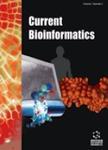版权所有:内蒙古大学图书馆 技术提供:维普资讯• 智图
内蒙古自治区呼和浩特市赛罕区大学西街235号 邮编: 010021

作者机构:Shanghai Maritime Univ Coll Informat Engn Shanghai 201306 Peoples R China Chinese Acad Sci Shanghai Inst Biol Sci Inst Biochem & Cell Biol Shanghai 200031 Peoples R China Chinese Acad Sci Shanghai Inst Biol Sci Inst Hlth Sci Shanghai 200031 Peoples R China Chinese Acad Sci Shanghai Inst Mat Med Drug Discovery & Design Ctr State Key Lab Drug Res Shanghai 201203 Peoples R China Shanghai Univ Coll Life Sci Shanghai 200444 Peoples R China
出 版 物:《CURRENT BIOINFORMATICS》 (生物信息学最新进展)
年 卷 期:2017年第12卷第6期
页 面:526-534页
核心收录:
学科分类:0710[理学-生物学] 07[理学] 09[农学]
基 金:National Natural Science Foundation of China [61202021 61303099]
主 题:Drug-drug interaction chemical interaction chemical structure similarity nearest neighbor algorithm majority voting imbalanced dataset
摘 要:Background: One drug can affect the activity of another when they are administered together, which can cause adverse drug reactions or sometimes improve therapeutic effects. Therefore, correct identification of drug-drug interactions (DDIs) can help medical workers use various drugs effectively, avoiding adverse effects and improving therapeutic effects. Methods: This study proposed a novel prediction model to identify DDIs. A new metric was constructed to evaluate the similarity of two pairs of drugs using chemical interaction information retrieved from STITCH. Validated DDIs retrieved from DrugBank were employed, from which we constructed all possible pairs of drugs that were deemed as negative samples. The whole dataset was divided into one training dataset and one test dataset. To address the imbalanced data, a complicated dataset compilation strategy was adopted to construct nine training datasets from the original training dataset, reducing the ratio of positive samples and negative samples. Nine predictors based on the nearest neighbor algorithm were built based on these training datasets. The proposed model integrated the above nine predictors by majority voting and its performance was evaluated on the test dataset. Results: The predicted results indicate that the method is quite effective for identification of DDIs. Finally, we also discussed the ability of the method for identifying novel DDIs by investigating the likelihood of some negative samples in the test dataset that were predicted as DDIs being novel DDIs. Conclusion: The proposed method has a good ability for identification of potential DDIs.